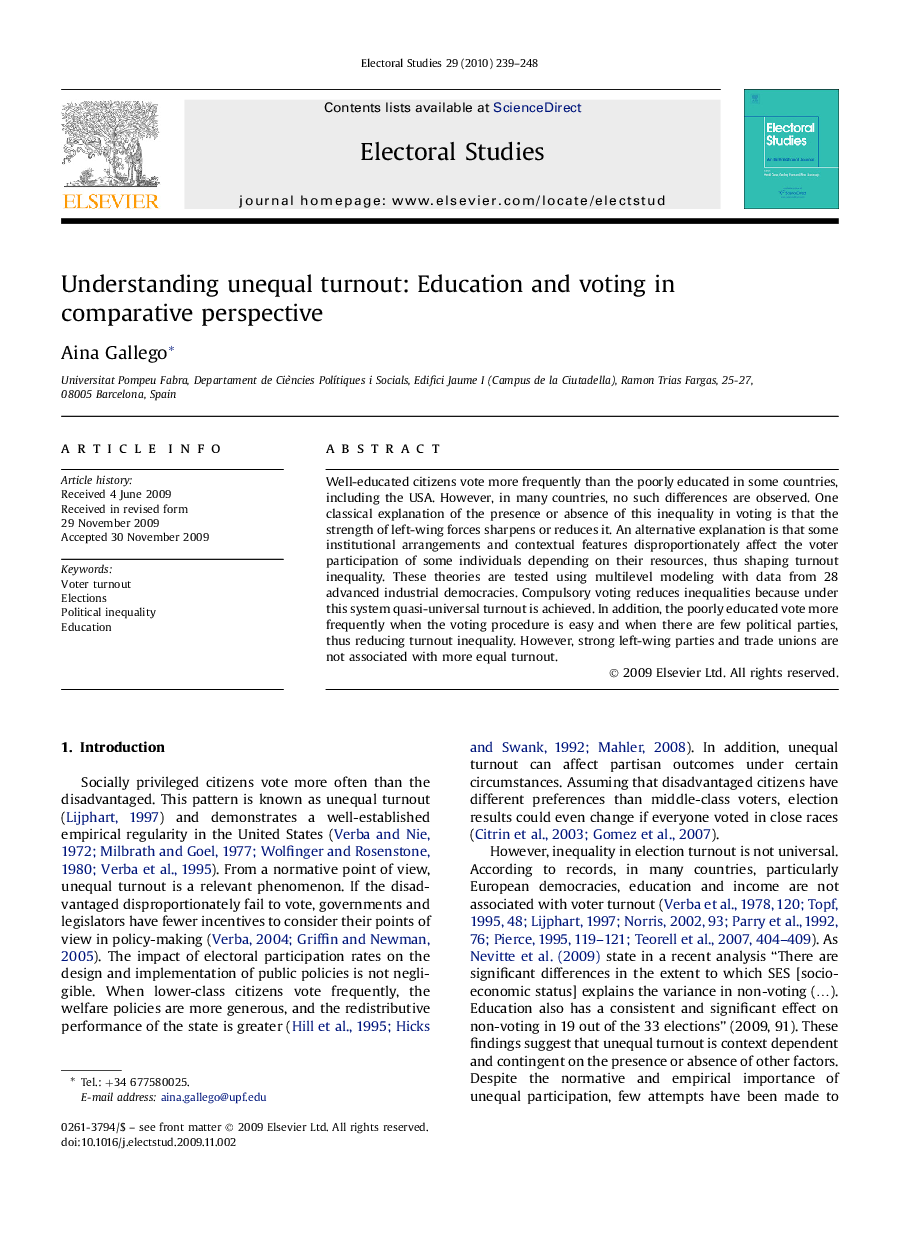| کد مقاله | کد نشریه | سال انتشار | مقاله انگلیسی | نسخه تمام متن |
|---|---|---|---|---|
| 1052064 | 946371 | 2010 | 10 صفحه PDF | دانلود رایگان |

Well-educated citizens vote more frequently than the poorly educated in some countries, including the USA. However, in many countries, no such differences are observed. One classical explanation of the presence or absence of this inequality in voting is that the strength of left-wing forces sharpens or reduces it. An alternative explanation is that some institutional arrangements and contextual features disproportionately affect the voter participation of some individuals depending on their resources, thus shaping turnout inequality. These theories are tested using multilevel modeling with data from 28 advanced industrial democracies. Compulsory voting reduces inequalities because under this system quasi-universal turnout is achieved. In addition, the poorly educated vote more frequently when the voting procedure is easy and when there are few political parties, thus reducing turnout inequality. However, strong left-wing parties and trade unions are not associated with more equal turnout.
Journal: Electoral Studies - Volume 29, Issue 2, June 2010, Pages 239–248